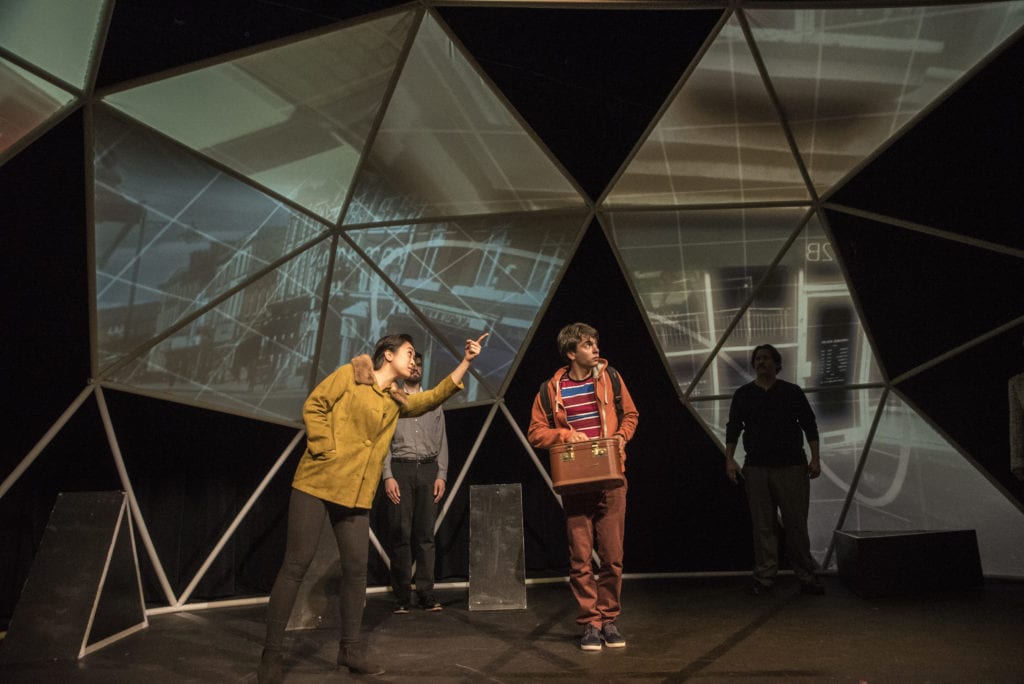
Jonathan: what was the first spark/idea that influenced your soundscape for this show?
Many of the aspects of the sound design are derived from Christopher’s focus on math formulas and systems. In the sound design I explored using many different theoretical structures that connected to math formulas, breaking from traditional music theory practices. These include the use of prime number chordal patterns, odd time signatures and melodies/harmonies based on different number sequence patterns.
Since one goal of this production is to take us inside Christopher’s experience of his journey, sometimes the audience is meant to be overwhelmed. How did you work that goal into your design process?
In the moments when Christopher experiences overload, I used random, sharp resonating tones to portray the internal tension he is feeling. The sounds are designed to help the audience experience these episodes through Christopher’s perspective and hopefully feel a connection to his visceral sensations.

This show demands a huge variety of very specific ambient noises. How did you go about your research, collection, and creation of the ambient elements?
The ambient sound design required a large amount of editing of sound gathered from sound collections and live recordings. By not adding ambient sound to every scene, we made a deliberate choice to present what Christopher was experiencing in certain moments. Not all of the sounds are fully realistic, instead they were filtered/edited to have a surrealistic effect during particular scenes.
What’s your favorite sound that appears within the show?
I don’t have a particular favorite sound, but my favorite aspect of composing music and designing sound for this production was tackling the challenge of using aural elements to convey the inner workings of Christopher’s experience. My goal was to use the sound design as a tool for expressing what Christopher was not able to communicate in his own words.
What is one thing you wish audiences knew about the field of sound design?
Sound designs for theatrical productions provide a wide palette of aural elements ranging from practical ambient sounds to abstract nondiegetic textures. Sound can transport the viewer through the time and space of the production in a unique way. Being the most abstracted of the design elements of a theatrical production, sound can stimulate sensations and feelings in the viewers that transcend the physical experience of the action on the stage.
